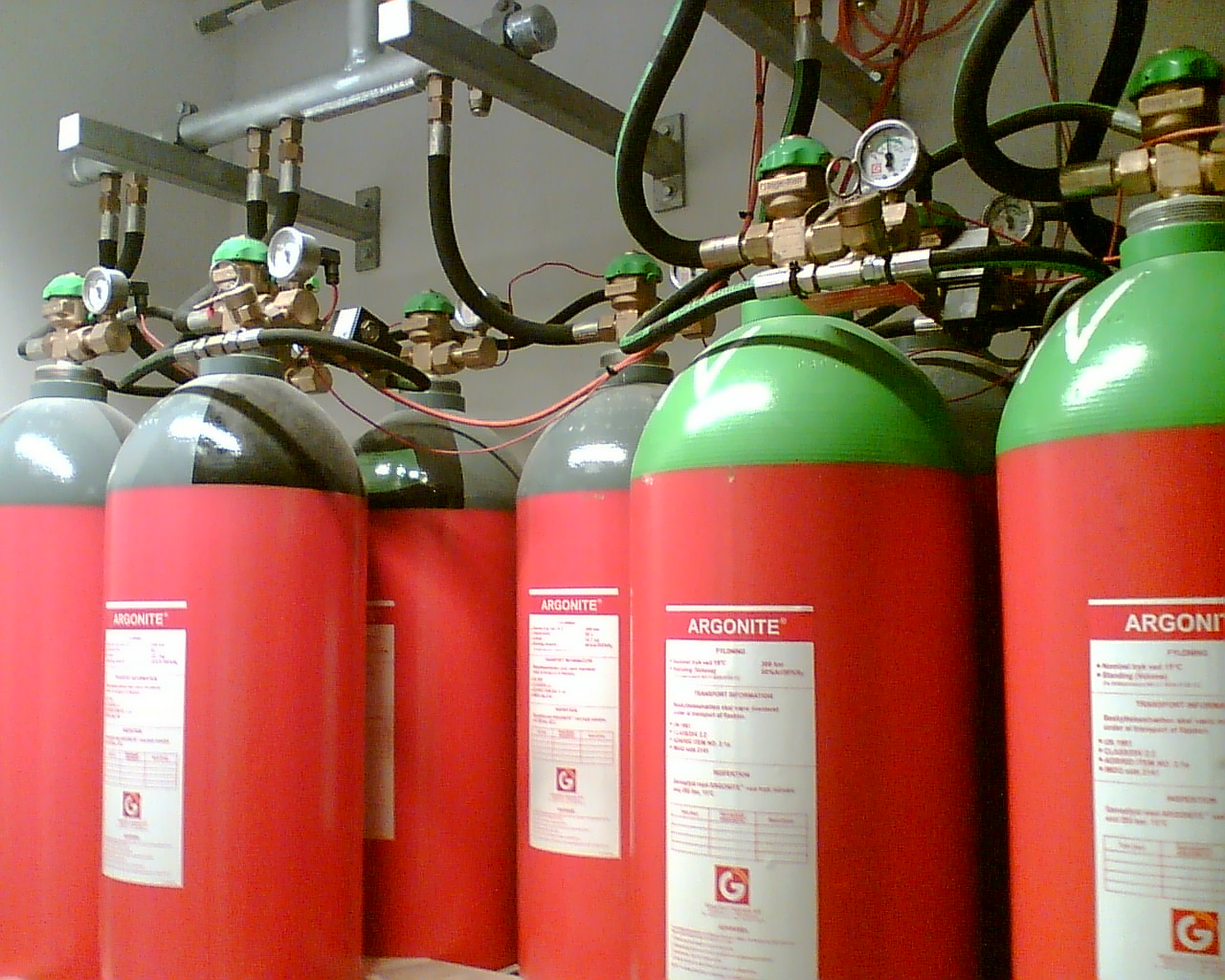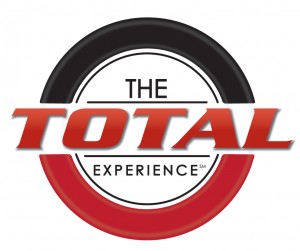-
March 15, 2018 by Total Fire and Safety
 Nobody thinks much about emergency exit lights. But if the power suddenly goes out, smoke fills the room and you can’t see a foot in front of you, relying on the emergency lights may be your only means of escape. Nobody thinks much about emergency exit lights. But if the power suddenly goes out, smoke fills the room and you can’t see a foot in front of you, relying on the emergency lights may be your only means of escape.
Emergency exit lights are essential to safety in any dangerous situation. They can alarm someone in a fire, be the only source of light in the dark, and the key to safely exiting the building. Emergency exit lights are often overlooked and taken for granted, but take note of how many you come across every day. Do you realize how many requirements and regulations go into the installation and maintenance of one exit sign?
There are numerous agencies that govern emergency exit lighting and signs: OSHA (Occupational Safety and Health Administration), NFPA (National Fire Protection Administration, JCAHO (Joint Commission on Accreditation of Healthcare Organizations and the International Building Code and International Fire Code. Above all these agencies, the local authority is responsible for monitoring and enforcing building/fire codes.
According to OSHA, an exit route is defined as a continuous and unobstructed path of exit travel from any point within a workplace to a place of safety. There are three parts to an exit route:
- Exit access-part of the exit route that leads to an exit.
- Exit-part of the exit route that is separated from other areas and provides a safe means of travel to exit discharge.
- Exit discharge-part of the exit route that leads to directly outside or refuge area.
OSHA’s requirements for the lighting of these afore mentioned exit routes is covered under 1910.37(b). It states that each exit route must be sufficiently lighted so an employee with normal vision can see along the exit route and each exit must be clearly visible and marked by a sign reading “EXIT.” Additional information for OSHA requirements can be found at www.osha.gov.
The NFPA guidance for emergency exit lighting and signs can be found in the NFPA 101, Life Safety Code. The NFPA’s Life Safety Code provides information for placement, illumination, and visibility for exit signs.
- Placement of exit sign. Any exit signs must be located so that no point in an exit access area is more than the sign’s viewing distance, or 100 feet from the nearest sign.
- Visibility of exit signs-Every sign must be located and of such size, distinctive color and design that is visible and contrasts from the background of its placement. NFPA also states no decorations, furnishings, or equipment that impairs visibility of a sign shall be permitted. Nothing should be placed near an exit sign that distracts attention and inhibits visibility of an exit sign.
- Illumination of Exit Signs-The NFPA states all exit signs must be illuminated by a reliable light source and legible in normal and emergency exit lighting modes. There are two categories of illumination: external illumination, which comes from outside the exit sign and internal illumination, which comes from a source inside an exit sign.
According to the NFPA, emergency illumination must be provided for a minimum of 1.5 hours in the event of power outage. The emergency lighting must be illuminated not less than an average of one lumen per square foot. The maximum illumination at any point can be 40 times the minimum illumination. All emergency exit lighting must be able to provide lighting automatically when normal light is interrupted.
Many emergency exit lights are now using LED lights. The NFPA states that LED lights are longer lasting, provide better light and are most durable. In emergency situations, LED lights emit sufficient lighting and are most effective when placed properly. They are also most energy efficient, saving the building money.
According to the NFPA requirements for testing, there are three categories of emergency lights: traditional, self-testing, and computer base self-testing. A monthly activation test which involves having the lights illuminate for no less than 30 seconds and an annual test which keeps the lights illuminated for 1.5 hours, simulating a long-term emergency. Records of these test must be maintained for inspection.
Many regulations, codes, and considerations go into the signs and lights you see every day so it is important to have regular maintenance and testing of these lights. Total Fire and Safety has a knowledge team for inspecting emergency exit lighting. With regular maintenance and testing from Total Fire and Safety, you can be assured your emergency exit lighting is up to code and the safety of your employees/tenants is assured. Give us a call today 630-960-5060.
Category: Business Safety, Fire code violation, Fire Equipment Inspections, Fire exits, Fire News, Fire Safety, Health and Safety, LED Lighting, NFPA Compliance, Total Experience, Total Fire and Safety Tags: commercial fire protection, commercial fire safety, emergency exit lights, emergency lighting, fire and safety equipment, fire and safety needs, fire and safety solutions, fire safety in the news, fire safety solution, fire safety training, lifesafety, safety | Comments Off on Are You In the Dark About Emergency Exit Lights?
-
March 28, 2017 by Total Fire and Safety

If you have a business that has any sort of valuable electronic equipment, like computers, servers, etc., you need to know about clean agent suppression systems. They are a liquid-free, fire suppression option, unlike sprinklers, that will not harm your electronic devices in the case of a fire and need for fire suppression. Just imagine the damage a sprinkler system would do to your equipment! Clean agents are an excellent alternative for many reasons:
Your computers and data rooms are a fire hazard to begin with. Computers and data rooms need very good ventilation because they can get very hot. The NFPA has specific regulations for computer rooms and electronic equipment areas, because there is a greater risk of fire from electronics.
Your business has a lot to lose from fire damage to electronics. Not only could you lose your equipment, but you could lose crucial data and online business. You could lose millions, literally, in the blink of an eye if a fire rips through the room that stores your equipment.
You won’t have to get soaked with a clean agent. When the system is activated, Halon 1301, a gaseous fire extinguishant, is released into the room. Halon fills the room and extinguishes the fire, but does not leave any residue on surfaces in the room. No mess to clean up afterward… the gas will evaporate and the room will be unharmed.
Because clean agents work by removing oxygen from the room, this kind of suppression system does post some danger to humans. Clean agents are great for rooms that are filled with servers and computers, but not people. There is a risk of suffocation if people are trapped in the room in an emergency situation.
The pros of a clean agent system are many to those areas of your business that require an alternative to sprinklers. At Total Fire & Safety, we are experts in the installation and maintenance of clean agent suppression systems for businesses. If you are considering an installation, contact us at 630-960-5060.
Category: Fire Extinguishers, Suppression system, Total Experience, Total Fire and Safety Tags: clean agent, clean agent suppression, clean agent supression system, Clean Agent System, Clean Agents, commercial fire suppression, fire suppression, fire suppression system, Suppression System | Comments Off on The Best Way to Protect Your Computers: Clean Agent Suppression Systems
-
November 4, 2013 by Total Fire and Safety
 Are you ready for a more convenient, easier way to manage your fire and safety needs? Are you ready for a more convenient, easier way to manage your fire and safety needs?
For more than 20 years, businesses have looked to Total Fire & Safety for comprehensive, fire safety solutions. Recently, however, we began searching to make a good thing even better. We recognize that each day, our customers are challenged with keeping track of the installation, inspection, and maintenance of a growing inventory of fire and safety equipment in multiple locations. We wanted them to be able to see a complete picture of their entire fire and safety needs, all in one convenient record. We also wanted them to have an interface where they could access their own information and conveniently request and track service online. When we couldn’t find anything acceptable on the market, we decided to create something!
With the help of a software developer, Total Fire & Safety developed the Total Experiencesm software for our customers! The Total Experiencesm is a revolutionary, one-of-a-kind, customer interface that provides real-time, comprehensive information about a company’s entire inventory of fire and safety equipment from one convenient, online portal. The fire safety solution is only available from Total Fire and Safety and gives customers convenient access and unprecedented control of their information. Here’s how customers receive the Total Experiencesm !
- Customers login to the Total Experiencesm portal. Data for equipment can be requested by location, address, or managing agent.
- Customers can then drill down to request detailed status information for any piece of equipment. Each record shows date installed, inspected, serviced, and next date of service needed. If a piece of equipment needs service, schedule the appointment online from within the portal and even download the information to an Outlook calendar.
- Next, customers can set and customize “business alerts” by text or email to help remember appointments or times to order service. Business alerts can also give real-time progress updates of service technicians and even estimate their time of arrival on-site.
- Finally, customers can track financial data for each location and piece of equipment, and run valuable reports for making prudent purchasing and maintenance decisions.
Look for the launch of The Total Experiencesm in December! If you’d like to learn more about how the Total Experiencesm can help your business now, contact us at 630.960.5060 or at info@totalfireandsafety.com.
Category: Total Experience Tags: fire and safety equipment, fire and safety needs, fire and safety software, fire and safety solutions, fire safety software, fire safety solution, Total Experience | Comments Off on Coming Soon! The Total Experience: A Revolutionary Fire Safety Solution!
|

|
|
|
|
|
|
 Nobody thinks much about emergency exit lights. But if the power suddenly goes out, smoke fills the room and you can’t see a foot in front of you, relying on the emergency lights may be your only means of escape.
Nobody thinks much about emergency exit lights. But if the power suddenly goes out, smoke fills the room and you can’t see a foot in front of you, relying on the emergency lights may be your only means of escape. Facebook
Facebook
 Instagram
Instagram
 LinkedIn
LinkedIn


